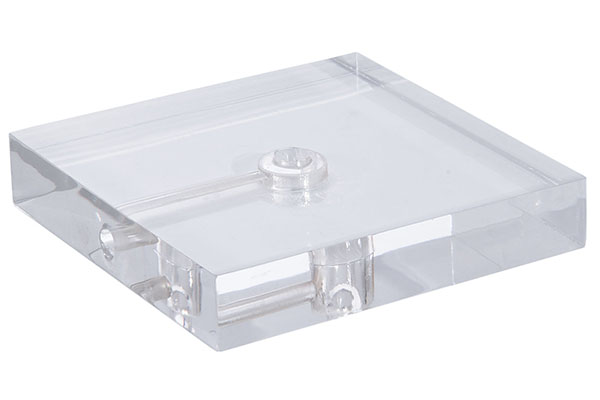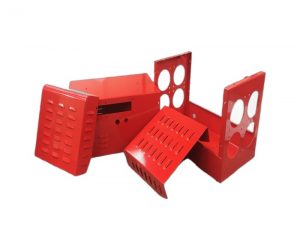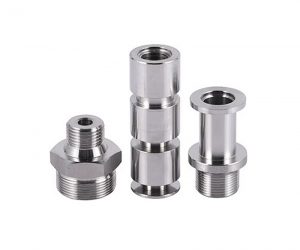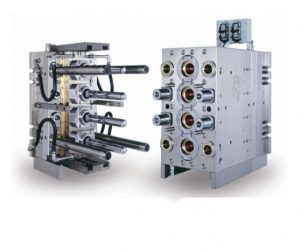Introduction
In the fast - paced world of modern manufacturing, the ability to quickly and accurately produce prototypes is a game - changer. Sheet metal rapid prototyping has emerged as a crucial technology, playing a pivotal role in various industries such as automotive, aerospace, electronics, and medical device manufacturing.
The significance of sheet metal rapid prototyping lies in its ability to bridge the gap between design concepts and physical products. In the past, the prototyping process was often time - consuming and costly, involving multiple manual steps and the creation of expensive molds. This not only extended the product development cycle but also increased the risk of errors and design flaws that could only be detected late in the production process.
This article will delve deep into the mechanisms and techniques that enable sheet metal rapid prototyping to achieve swift precision manufacturing. Yigu Technology will explore the key technologies involved, the materials used, the design considerations, and real - world applications, providing a comprehensive understanding of this transformative manufacturing process.
I. Understanding Sheet Metal Rapid Prototyping
1.1 Definition and Basics
Sheet metal rapid prototyping is a cutting - edge manufacturing technique that combines the power of computer - aided design (CAD) software with advanced machinery to swiftly transform sheet metal into functional prototypes.
In this process, designers first create a detailed 3D model of the desired part using CAD software. This digital model serves as the blueprint for the entire prototyping process. The CAD software allows for precise control over every aspect of the design, including dimensions, shapes, and tolerances. For Yigu Technology example, in the design of a new smartphone case made from sheet metal, the CAD model can accurately define the curves for a comfortable grip, the cut - outs for buttons and ports, and the overall thickness to ensure a perfect fit for the device.
Once the CAD model is complete, it is transferred to the manufacturing machinery. Advanced equipment such as laser cutters, CNC (Computer Numerical Control) machines, and 3D printers are then employed to shape the sheet metal according to the design specifications. Laser cutters use high - energy laser beams to precisely cut the sheet metal, capable of creating intricate and complex shapes with high accuracy. CNC machines, on the other hand, can perform a variety of operations such as drilling, milling, and bending, providing great versatility in the manufacturing process. 3D printers, although less common in traditional sheet metal prototyping, can be used to create complex geometries or additively manufacture parts in combination with sheet metal components.
III. Material Selection and Its Impact
3.1 Common Sheet Metal Materials
The choice of material in sheet metal rapid prototyping is crucial as it directly impacts the performance, functionality, and cost of the final prototype. Here are some of the most commonly used sheet metal materials:
- Aluminum: Aluminum is a popular choice in many industries due to its low density, which makes it lightweight. It has excellent corrosion - resistance, thanks to the formation of a thin oxide layer on its surface when exposed to air. This oxide layer protects the underlying metal from further oxidation and degradation. For Yigu Technology example, in the aerospace industry, where every gram of weight reduction can lead to significant fuel savings and improved performance, aluminum is widely used in the construction of aircraft fuselages, wings, and engine components. It also has good thermal and electrical conductivity, and is relatively easy to machine, allowing for efficient production of prototypes.
- Edelstahl: Stainless steel is renowned for its high strength and outstanding corrosion - resistance. It contains a minimum of 10.5% chromium, which forms a passive oxide film on the surface, preventing rust and corrosion even in harsh environments. There are different grades of stainless steel, such as 304 and 316. Grade 304 is one of the most common, used in a wide range of applications including kitchen appliances, food processing equipment, and architectural components. Grade 316, on the other hand, contains molybdenum, which enhances its resistance to corrosion, especially in chloride - rich environments. This makes it suitable for applications in the marine and chemical industries, where exposure to saltwater and aggressive chemicals is common.
- Kupfer: Kupfer is highly valued for its exceptional electrical and thermal conductivity. In the electronics industry, it is the material of choice for components such as printed circuit boards (PCBs), electrical connectors, and wiring. Its high electrical conductivity ensures efficient transmission of electrical signals with minimal power loss. For example, in high - speed data transmission cables, copper is used to maintain signal integrity. Copper also has good heat - transfer properties, making it useful in heat exchangers, where it can effectively transfer heat from one medium to another. Additionally, copper has some antibacterial properties, which find applications in healthcare and food - handling environments.
- Titanium: Titanium is a high - performance metal with an excellent strength - to - weight ratio. It is extremely strong yet lightweight, making it ideal for applications where both strength and low weight are critical, such as in the aerospace and medical industries. In aerospace, titanium is used in the manufacture of aircraft engines, landing gear, and structural components, as it can withstand high temperatures, mechanical stress, and fatigue. In the medical field, titanium is used for implants like hip and knee replacements due to its biocompatibility, which means it is well - tolerated by the human body and does not cause adverse immune reactions. It also has excellent corrosion - resistance, even in the presence of bodily fluids.
3.2 Factors in Material Selection
When selecting a sheet metal material for rapid prototyping, several factors need to be carefully considered:
- Strength and Durability: The material must have sufficient strength to withstand the mechanical stresses and forces it will encounter during the intended use of the prototype. For example, if the prototype is a component for a heavy - duty industrial machine, it needs to be made of a strong material like stainless steel or titanium to ensure it can endure the high loads and vibrations. Durability is also important, especially for prototypes that will be subjected to repeated use or harsh environmental conditions. A material with good fatigue resistance, such as aluminum alloys with proper heat treatment, can be a suitable choice for components that experience cyclic loading.
- Weight: In applications where weight is a critical factor, such as in aerospace, automotive, and portable electronics, lightweight materials like aluminum or titanium are preferred. Reducing the weight of components can lead to improved fuel efficiency in vehicles and aircraft, and enhanced portability in electronic devices. For instance, in the design of a new laptop, using aluminum for the casing can make the device lighter without sacrificing structural integrity.
- Cost: Material cost is often a significant consideration, especially for companies with budget constraints. Aluminum is generally more cost - effective compared to titanium, making it a popular choice for applications where cost is a major factor but still requires good mechanical properties. Stainless steel also has a wide range of costs depending on the grade and quality. For large - scale production of prototypes, choosing a cost - effective material can significantly reduce overall expenses. However, it's important to balance cost with other requirements, as a cheaper material may not always meet the performance and quality standards needed.
- Workability: The workability of a material refers to how easily it can be cut, bent, welded, and formed into the desired shape during the prototyping process. Aluminum and copper are relatively easy to machine and form, which allows for quick and efficient production of prototypes. Stainless steel, especially some high - strength grades, can be more challenging to work with due to its hardness, but with the right tools and techniques, it can still be successfully processed. For example, laser cutting and CNC machining are effective methods for working with stainless steel.
3.3 How Material Properties Affect Prototyping
The properties of the chosen sheet metal material have a profound impact on the prototyping process and the performance of the final prototype:
- Mechanical Properties: Strength, hardness, and ductility are key mechanical properties. A material with high strength can support heavier loads, but it may be more difficult to form. For example, titanium, with its high strength, requires more powerful machinery and specialized techniques for bending and shaping. Ductility, on the other hand, allows a material to be stretched or bent without breaking. Aluminum has good ductility, which makes it easy to form into complex shapes, such as the curved panels of a car body.
- Thermal Properties: Materials with high thermal conductivity, like copper, can dissipate heat quickly. This is beneficial for prototypes that need to manage heat, such as heat sinks in electronic devices. In contrast, materials with low thermal expansion coefficients, such as some stainless - steel alloys, are less likely to deform or warp when exposed to temperature changes. This is crucial for prototypes in applications where dimensional stability is required, like in precision optical instruments.
- Electrical Properties: Copper's excellent electrical conductivity makes it essential for electrical components. If a prototype is an electrical connector or a part of an electrical circuit, using copper ensures efficient electrical transmission. In some cases, materials with high electrical resistance may be required for insulation purposes, and choosing the right material with the appropriate electrical properties is vital for the proper functioning of the prototype.
- Corrosion Resistance: In environments where the prototype will be exposed to moisture, chemicals, or other corrosive agents, corrosion - resistant materials are necessary. Stainless steel and aluminum's corrosion - resistance properties protect the prototype from degradation over time. For example, a prototype for a marine application, such as a boat component, needs to be made of a highly corrosion - resistant material like stainless steel or a specialized aluminum alloy to withstand the harsh saltwater environment.
V. Case Studies: Real - world Success
5.1 In the Automotive Industry
The automotive industry is one of the sectors that have greatly benefited from sheet metal rapid prototyping. A well - known automotive manufacturer was in the process of developing a new line of vehicles. The design team had come up with an innovative body panel design that aimed to improve the vehicle's aerodynamics and aesthetics.
In the past, the development of a new body panel would involve a long - drawn - out process. First, a design would be created on paper, and then a prototype would be made using traditional methods. This often required the creation of expensive molds, which took a significant amount of time to produce. Any design changes would mean modifying or even remaking the molds, leading to substantial cost increases and delays.
However, with sheet metal rapid prototyping, the manufacturer was able to revolutionize this process. Using CAD software, the design team quickly created a detailed 3D model of the new body panel. This model was then transferred to a laser cutter and a CNC machine. The laser cutter precisely cut the sheet metal according to the design, while the CNC machine performed operations such as bending and drilling.
The result was a significant reduction in the development time for the new body panels. The manufacturer was able to cut the development time by 50%. Instead of spending months on the development process, they could now complete it in a matter of weeks. This not only allowed them to bring the new vehicle models to market much faster but also gave them a competitive edge. They could respond more quickly to market trends and customer demands, and also conduct more design iterations in a shorter period, resulting in a higher - quality final product.
5.2 Aerospace Applications
In the aerospace industry, precision and performance are of utmost importance. An aerospace company was working on developing a new wing design for one of its aircraft models. The new design was intended to improve the aircraft's fuel efficiency, reduce drag, and enhance overall flight performance.
Sheet metal rapid prototyping played a crucial role in this development. The company used a combination of advanced technologies for the prototyping process. They first created a highly detailed 3D model of the new wing using CAD software. This model took into account various factors such as aerodynamics, structural integrity, and weight distribution.
By using sheet metal rapid prototyping, the aerospace company was able to test the new wing design much earlier in the development cycle. They could quickly identify any design flaws or areas that needed improvement. For Yigu Technology example, through wind - tunnel testing of the prototypes, they discovered that a particular section of the wing was causing excessive turbulence. They were then able to modify the design in the CAD model and create a new prototype within a short period.
VIII. Conclusion
Sheet metal rapid prototyping has emerged as a revolutionary force in the manufacturing landscape, enabling swift precision manufacturing across a wide range of industries. As we have explored, its success is attributed to a combination of key elements that work in harmony to deliver remarkable results.
The technological advancements in sheet metal rapid prototyping, such as laser cutting, CNC machining, 3D printing, and waterjet cutting, form the backbone of its precision and speed. Laser cutting provides ultra - precise cuts for intricate designs, reducing material waste and ensuring high - quality results. CNC machining enables precise shaping, drilling, and cutting of sheet metal parts, offering versatility and high repeatability. 3D printing allows for the creation of complex geometries that were once challenging or impossible to achieve with traditional methods. Waterjet cutting, with its ability to cut through thick materials without heat distortion, is a valuable addition to the prototyping toolkit.
Material selection is another critical aspect. The choice of materials like aluminum, stainless steel, copper, and titanium, each with their unique properties, impacts the performance, functionality, and cost of the prototypes. Aluminum's lightweight and corrosion - resistant nature make it ideal for applications where weight reduction is crucial, such as in aerospace and automotive industries. Stainless steel's strength, durability, and corrosion resistance make it suitable for medical devices, food processing, and industrial applications. Copper's excellent electrical and thermal conductivity is essential for electronics and heat exchange systems. Titanium's exceptional strength - to - weight ratio and corrosion resistance find applications in high - performance industries like aerospace and medical implants.
FAQs
9.1 What are the primary benefits of sheet metal rapid prototyping?
The primary benefits of sheet metal rapid prototyping are multi - fold. Firstly, it significantly reduces development time. Traditional prototyping methods often involve complex processes such as mold - making, which can take weeks or even months. In contrast, sheet metal rapid prototyping can create a prototype in a matter of days or even hours. For Yigu Technology example, a consumer electronics company developing a new device enclosure can use rapid prototyping to quickly produce a prototype for initial testing, cutting the development time by up to 60% compared to traditional methods.
Secondly, it leads to cost savings. By detecting and rectifying design flaws at the prototype stage, costly rework during mass production can be avoided. A study showed that companies that adopted sheet metal rapid prototyping saved an average of 30 - 40% in production costs due to fewer design - related errors in mass production.
Thirdly, it improves design accuracy. Advanced technologies like laser cutting and CNC machining used in rapid prototyping can achieve high - precision cuts and shaping, ensuring that the prototype closely matches the design specifications. This high level of accuracy also enhances the overall quality of the final product.
Finally, it enables quick iteration and testing of designs. Designers can rapidly create multiple prototypes with different design variations, test them, and make improvements. This iterative process leads to better - optimized products and a faster time - to - market.
9.2 How can one ensure material compatibility during sheet metal rapid prototyping?
Ensuring material compatibility during sheet metal rapid prototyping is crucial. Before starting the prototyping process, it is essential to conduct thorough material testing. This can involve simple tests like checking the material's response to cutting, bending, and welding processes. For example, some materials may crack during bending, indicating incompatibility with the intended fabrication methods.
9.3 What software is best for designing sheet metal prototypes?
There are several software options, each with its own strengths:
- AutoCAD: Widely used for creating detailed 2D engineering drawings and schematics. It is excellent for designers who are more accustomed to 2D design and need to create precise plans for sheet metal cutting and shaping.
- SolidWorks: A comprehensive tool for 3D design, simulation, and testing, particularly in complex mechanical and sheet metal parts. It has specialized features for sheet metal design, such as the ability to create and manage sheet metal - specific features like bends, flanges, and hems.
- Fusion 360: A cloud - based design and simulation tool. It combines mechanical design, machining, and collaboration features in one platform.



